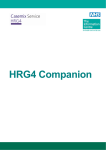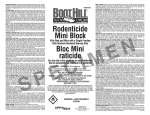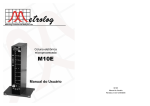Download Cubicle curtain track - Health Facilities Scotland
Transcript
Scottish Health Technical Memorandum 66 SHTM Building Component Series Cubicle curtain track December 2006 SHTM 66 Cubicle curtain track - Building Component Series Contents 1. 1.1 1.3 1.5 1.10 page Introduction ...............................................................................................3 Background ................................................................................................3 Scope and status........................................................................................3 Relationship to other data...........................................................................4 Terminology................................................................................................4 2. 2.1 2.2 2.3 2.4 2.5 2.6 2.7 2.10 2.12 2.13 User requirements ....................................................................................6 Constituent parts ........................................................................................6 Constituent materials..................................................................................6 Exposed surfaces .......................................................................................6 Fire propagation .........................................................................................6 Strength......................................................................................................7 Electrostatic charges ..................................................................................7 Quietness and smoothness in operation ....................................................7 Curtain hanging and changing....................................................................7 Resistance to mechanical wear ..................................................................7 Biological control ........................................................................................7 3. 3.1 3.6 3.7 3.17 3.19 3.35 Design guidance .......................................................................................8 Track height................................................................................................8 Cubicle layouts ...........................................................................................9 Track suspension .......................................................................................9 Low weight release systems..................................................................... 11 Curtains and curtain changing .................................................................. 11 Maintenance manual ................................................................................13 References....................................................................................................... 15 Disclaimer The contents of this document are provided by way of general guidance only at the time of its publication. Any party making any use thereof or placing any reliance thereon shall do so only upon exercise of that party’s own judgement as to the adequacy of the contents in the particular circumstances of its use and application. No warranty is given as to the accuracy, relevance or completeness of the contents of this document and Health Facilities Scotland shall have no responsibility for any errors in or omissions therefrom, or any use made of, or reliance placed upon, any of the contents of this document. Version 1.0: December 2006 © Health Facilities Scotland, a Division of NHS National Services Scotland page 2 of 16 SHTM 66 Cubicle curtain track - Building Component Series 1. Introduction Background 1.1 This is one of a series of Scottish Health Technical Memoranda which provide specifications and design guidance on building components for health buildings. A Reference Section is provided at the end of this document, including Acts, Regulations and British Standards. 1.2 The numbers and titles of the SHTMs in the series are: • 54 User manual; • 55 Windows; • 56 Partitions; • 57 Internal glazing; • 58 Internal doorsets; • 59 Ironmongery; • 60 Ceilings; • 62 Demountable storage system; • 63 Fitted storage system; • 64 Sanitary assemblies; • 66 Cubicle curtain track; • 67 Laboratory fitting out systems; • 69 Protection. Scope and status 1.3 This SHTM offers guidance on the technical design and output specifications of curtain cubicle track in health buildings. 1.4 Its content does not diminish either the manufacturer’s responsibility for fitness for purpose of products or the design team’s responsibility for selection and application of products to meet project requirements. Design teams are also reminded of their obligations under the Construction, Design and Management (CDM) Regulations 1994 (as amended 2000) to ensure safe construction. Version 1.0: December 2006 © Health Facilities Scotland, a Division of NHS National Services Scotland page 3 of 16 SHTM 66 Cubicle curtain track - Building Component Series Relationship to other data 1.5 The main sources of data used in the preparation of this SHTM are listed in the References section. 1.6 This SHTM was prepared for publication in December 2006. After this date, readers should ensure that they use the latest or new edition of all building legislation, British Standards etc, which may post-date the publication of this document. 1.7 First preference should be given to products and services from sources which have been registered under current BSI Quality Assurance system procedures or other certification schemes. Suppliers offering products other than to British Standards should provide evidence to show that their products are at least equal to such Standards. 1.8 This guidance should be used in conjunction with sections of the National Building Specification (NBS) relevant to fittings/accessories. NBS is a library of standard specification clauses covering most kinds of building work and comprising a wide range of clauses with accompanying guidance notes. All clauses are optional, and their combination into a job specification is left to the specifier. NBS has great flexibility, and it can be adapted to suit the technical needs and preferences of different projects, organisations and specifiers. Specifications go out of date as a result of technical innovation or major review of a key BSI document. As NBS sections become affected by such major changes, they are reissued to members of the subscription service. Users are advised to ensure that they refer to the current edition. Refer to the NBS website at http://www.thenbs.com 1.9 Any queries regarding the technical content of this SHTM should be e-mailed to [email protected] Terminology 1.10 In this SHTM the following definitions apply: • cubicle curtain track system – a component assembly to support curtains forming cubicles; • track – the horizontal member which supports the runners and the curtains; • suspended track – track fixed at a level significantly below the ceiling soffit; • ceiling fixed track – track fixed directly to the ceiling soffit; • track height – dimension from finished floor level to underside of track; • parking of curtains – the drawing back and bunching of curtains to predetermined positions when not in use; • loading device – a device to facilitate the removal and replacement of curtains; Version 1.0: December 2006 © Health Facilities Scotland, a Division of NHS National Services Scotland page 4 of 16 SHTM 66 Cubicle curtain track - Building Component Series • low weight release system (anti-ligature) – designed to reduce the possibility of patient self-harm, this is a system that will securely retain the load it is designed for. When an abnormal load is applied, it will release the load; • anti-deflection device – mechanism to reduce or eliminate deflection on application of load at the centre of the track. Version 1.0: December 2006 © Health Facilities Scotland, a Division of NHS National Services Scotland page 5 of 16 SHTM 66 Cubicle curtain track - Building Component Series 2. User requirements Constituent parts 2.1 Each cubicle curtain track system should comprise: • track; • wall fixing devices; • direct-to-ceiling fixings – vertical hangers – V-hangers; • bay connectors; • stop ends; • curtain loading device; • gliders or runners; • hooks or buttons; • low weight release systems (anti-ligature). Constituent materials 2.2 Choice of materials should be such that they do not suffer dissimilar metal corrosion or corrosion from humidity, etc. in specified conditions. No constituent part should contain material: • known or reasonably believed to constitute a health hazard under normal conditions of use; • which will give off toxic products in the event of a fire. Exposed surfaces 2.3 All surface finishes should be capable of withstanding the range of temperature and humidity conditions encountered in health buildings. Refer to relevant SHPN, HBN and associated SHTM technical guidance. Fire propagation 2.4 All structural parts of a system should be non- combustible as defined in BS 476-4:1970, but combustible materials may be employed for small nonstructural parts. Fire resistance of curtains to be in accordance with paragraph 3.21. Version 1.0: December 2006 © Health Facilities Scotland, a Division of NHS National Services Scotland page 6 of 16 SHTM 66 Cubicle curtain track - Building Component Series Strength 2.5 Track suspension (braced or unbraced) should have a breaking strength of not less than 180 kg between upper and lower fixing points at any location within the collapsible subsystem (see also paragraphs 3.17–3.18 for rails used in mental health settings). The weakest components in the system should be the gliders or runners. Electrostatic charges 2.6 No system should, to any appreciable extent, develop or shed electrostatic charges. Manufacturers to be consulted as relevant at specification stage and specialist technical input should be sought if required. Quietness and smoothness in operation 2.7 No quantifiable criteria are available for quietness and smoothness in operation, but systems should be selected with these two important requirements in mind. 2.8 Particular consideration should be given to the operation of gliders or runners at approximately 100mm centres around bends of minimum radius. 2.9 During installation, care must be taken to avoid stepped joints where it is necessary to join track. Curtain hanging and changing 2.10 Gliders or runners should be designed to enable attachment of curtains by hooks or buttons. 2.11 Each system should include a device which will facilitate the loading or unloading of curtains from the track (see paragraphs 3.19–3.34). Resistance to mechanical wear 2.12 Gliders and runners and track-wearing surfaces should be capable of withstanding at least 20,000 cycles of curtain movement without appreciable loss of quietness or smoothness in operation, or visible wear. Relevant manufacturers test certification to be provided as required. Biological control 2.13 No system should contain material capable of supporting the growth of bacteria, fungi etc or encouraging the harbourage of insects or mites. Relevant manufacturers certification to be provided as required. Version 1.0: December 2006 © Health Facilities Scotland, a Division of NHS National Services Scotland page 7 of 16 SHTM 66 Cubicle curtain track - Building Component Series 3. Design guidance Track height 3.1 There are a number of factors to be considered in determining curtain track height and the related form of suspension if direct fixing to the ceiling is more practical. 3.2 One of the most important considerations is the effect of curtains, whether drawn or parked, on natural and artificial lighting. 3.3 Design teams should also consider the appearance of track and curtain configurations within and around the cubicles. Track height may need to coordinate with window head height or glazed screen depending on configuration. The layout of the ceiling tiles and associated fittings also require co-ordination to prevent clashes. 3.4 For suspended track installations, track height will normally be 2100mm. One sided Two sided Three sided Figure 1: Single bay cubicles Version 1.0: December 2006 © Health Facilities Scotland, a Division of NHS National Services Scotland page 8 of 16 SHTM 66 Cubicle curtain track - Building Component Series 3.5 Ceiling-fixed track applications are normally limited to ceiling heights of up to 2700mm. In such instances, the 600mm difference comprises a lightweight fabric net which permits the passage of light and air movement. Note: Where an overhead tracking system has been installed to transfer or move patients, the height of the curtain may need to be altered to allow free movement of the equipment. Cubicle layouts 3.6 Examples of single- and multiple-bay cubicle layouts and their relationship to walls or partitions are given in Figures 1 and 2. Space within and around cubicles should take account of the dimensional guidance One sided Two sided Figure 2: Multiple bay cubicles Track suspension 3.7 In both suspended and ceiling-fixed track systems, the spacing and location of fixing points should be strictly in accordance with the manufacturers’ recommendations. 3.8 Suspended track must be restrained to prevent horizontal movement by direct fixing of track to flank walls or partitions; tie-bars; V-hangers fixed to the ceiling; any combination of these as appropriate to the layout. 3.9 Some examples are given in Figures 3–5. In Figure 3, wall fixings at one end of front rail (with tie-bar where necessary) provide adequate lateral support for up to eight cubicles. Beyond that, the manufacturer should be consulted to confirm specification for restraint. Version 1.0: December 2006 © Health Facilities Scotland, a Division of NHS National Services Scotland page 9 of 16 SHTM 66 Cubicle curtain track - Building Component Series Figure 3 3.10 In Figure 4, V-hangers provide lateral restraint on inner tracks of up to three cubicles when no wall fixing on front rail can be provided. Beyond three cubicles, the manufacturer should be consulted. Figure 4 3.11 As shown in Figure 5, where the arrangement of windows, engineering services and bedhead units permits, curtains may be parked on an extension of the track fixed parallel to a wall and supported by a wall bracket. This support is as effective as the normal wall fixing which is used where track meets wall at 90°. Figure 5 3.12 Note that V-hangers have a very limited application. A tie-bar with wall fixing provides much more effective lateral restraint. 3.13 Tie-bars comprise lengths of track which are not fitted with gliders or runners; this ensures consistency of appearance and standardisation of fittings. 3.14 Ceiling-fixed track needs no restraint to prevent horizontal movement. 3.15 Hangers supporting track are generally of rod construction. However, wire hangers are preferred when the hanger is longer than 1000mm or when raking Version 1.0: December 2006 © Health Facilities Scotland, a Division of NHS National Services Scotland page 10 of 16 SHTM 66 Cubicle curtain track - Building Component Series hangers must be used because a ceiling fixing is not practical (for example, a weak membrane in an existing ceiling). 3.16 Obtain advice from the manufacturer whenever unusual project conditions apply. Low weight release systems 3.17 For some years it has been recognised that a major means of suicide among inpatients in mental health units is using curtain or shower rails as a ligature point. There are specific Estates, Hazard, Facilities and Safety Action Notices which deal with relevant issues. These are updated at frequent intervals. Refer to www.show.scot.nhs.uk for further current information (password access may be required to certain restricted documents). 3.18 In summary, the following action should be taken: • identify and remove all non-collapsible bed, cubicle and shower curtain rails and window curtain rails in mental health in-patient settings; • determine requirements for anti-ligature design; • replace with collapsible-type bed and shower curtains; • system manufacturers should provide installation drawings showing positions of hangers; • ensure any new system does not introduce new risk; • the tracking must be designed to collapse when abnormal loads are applied to it. The system must incorporate anti-deflection devices as required to ensure that only full collapses, not partial, occur; • flexible dust covers should be cut into maximum 150mm lengths. Alternatively, a solid cover can be used; • once installed, ensure regular maintenance checks and load tests are carried out according to manufacturers’ instructions. See also NHS Estates alert notices NHSE (2004) 05; NHSE (2004) 08; NHSE (2004) 10; and SN (2002) 01. Curtains and curtain changing 3.19 Commissioning and design teams must cooperate when selecting curtains, particularly when deciding on the thickness, colour and fullness of curtains and the adequacy of suspension tape. Earlier design decisions regarding bunching and parking of curtains and the transmission of light and ventilation should be passed on to the commissioning team. Version 1.0: December 2006 © Health Facilities Scotland, a Division of NHS National Services Scotland page 11 of 16 SHTM 66 Cubicle curtain track - Building Component Series 3.20 For ceiling-fixed tracks, the transmission of light and ventilation is of particular importance and will involve scalloping or netting (which may be difficult to clean) from 2100mm to ceiling level. 3.21 All curtains are treated with a fire-retardant tested in accordance with BS 54381:1976. 3.22 Printed curtains are 1200mm wide and 2000mm high; colour woven curtains are 1830mm wide and 2000mm high. 3.23 The amount of fullness can vary from 5 to 25% depending on hospital policy. Curtain parking 3.24 A key consideration in detailing layouts is the parked position of cubicle curtains, either along a wall or at right-angles to it. Curtains parked along a wall allow maximum observation, but are less easy to draw, and call for careful detailing to avoid obstruction of adjacent engineering service outlets. 3.25 Curtains parked at right-angles to a wall reduce observation but, by the same token, increase privacy. They are easier to draw and less likely to obstruct adjacent engineering terminals. 3.26 Parked curtains will obviously take up some of the working space of bed areas, and the parking space will vary depending on the fullness of the material. 3.27 As a general rule, track required to park the curtains will be about 15% of track length when cotton fabric is used. 3.28 For example, a bed space 2900mm deep and 2500mm long, assuming curtains for one side and the end are to be parked, will require 810mm of track for parking. 3.29 Part of the curtain can be parked behind the bedhead, but it is unlikely that projection of the curtain from the wall can be eliminated entirely. If the NHS Board has a policy which includes tightly bunching the curtains, the provision of extra track solely for curtain parking can be reduced. Curtain changing 3.30 Domestic services staff are usually responsible for changing curtains. Speed and efficiency of the procedure are of great importance to the smooth running of the department, which should minimise: • loss of cubicle function; • hindrance to other user activities by restricting or blocking circulation spaces; • disturbance of patients; Version 1.0: December 2006 © Health Facilities Scotland, a Division of NHS National Services Scotland page 12 of 16 SHTM 66 Cubicle curtain track - Building Component Series 3.31 • operator fatigue and the associated risk of accidents when working at or near ceiling height; and • risk of cross-infection due to movement of soiled curtains. Curtain-loading devices reduce these problems by enabling staff to change curtains more quickly and transferring the hooking and unhooking stages to normal working height. One device per floor is usually adequate. They: • allow an untrained operative to load a curtain complete with gliders or runners; • are for use on suspended or (with minor adaptation) on ceiling-fixed track; • give full control of feed-on of gliders or runners. 3.32 Soiled curtains are usually unloaded straight into a container on the floor, the gliders or runners being run off the track when an end-stop is removed to fit the loading device. 3.33 Curtains are changed at the end of the cubicle furthest from the patient’s head, and the fitting and removal of gliders or runners to the curtains takes place entirely outside the patients’ area. 3.34 The accuracy and frequency with which hooks or buttons are spaced along the operative width of the curtain is a key factor in ensuring that the curtain will draw easily around track bends. This will be achieved if the hooks or buttons are fitted to the curtain before delivery to the cubicle. The use of curtains with predetermined hook or button positions should be considered. Maintenance manual General 3.35 An operation and maintenance manual should be compiled and should be handed to the maintenance staff immediately following the practical completion of the contract. 3.36 The manufacturer’s recommendations in respect of periodic inspection and maintenance should be followed to ensure that acceptable levels of performance are maintained. Hygiene and cleaning 3.37 Control and Prevention of Healthcare Associated Infection (HAI) is a priority issue for NHSScotland – both in respect of the safety and well being of patients and staff and also the resources consumed by potentially unavoidable infections. Version 1.0: December 2006 © Health Facilities Scotland, a Division of NHS National Services Scotland page 13 of 16 SHTM 66 Cubicle curtain track - Building Component Series Healthcare Associated Infection (HAI) is a complex issue involving the many different elements of patient care and provision. Due to its multi-factorial nature there is a need to develop a holistic approach to combating the spread of infection within the built environment. It is imperative that those involved in the design and planning, construction and refurbishment and on-going maintenance of the healthcare facility have a sound knowledge of prevention and control of infection in the built environment. SHFN 30 and HAI-SCRIBE aim to provide information on the prevention and control of infection, and on the prevention of cross-infection and cross contamination in healthcare facilities, to those responsible for the planning, design and maintenance of such facilities. Cleaning is an essential part of the multi-disciplinary approach in improving patient, staff and public safety. Safe clinical care is supported through ensuring high standards of hygiene and related measures to tackle HAI in the healthcare environment. Cleaning regimes including frequency of cleaning should be addressed in line with current national guidance together with any additional Local Management requirements. Relevant Provisions of current guidance, standards and Codes of Practice for cleaning of healthcare premises and including the latest technical requirements are embodied in the following documents: 3.38 • SHFN 30: Infection Control in the built environment: Design and Planning; • HAI-Scribe (Healthcare Associated Infection System for Controlling Risk in the Built Environment); • The NHSScotland National Cleaning Services Specification; • NHS Quality Improvement, Scotland – Healthcare Associated Infection (HAI) Cleaning Services Standards; • The NHSScotland Code of Practice for the Local Management of Hygiene and Healthcare Associated Infection; • Clinical Standards Board for Scotland Healthcare Associated Infection (HAI) Infection Control Standards. The construction should be capable of withstanding the cleaning regimes given in the above guidance. Version 1.0: December 2006 © Health Facilities Scotland, a Division of NHS National Services Scotland page 14 of 16 SHTM 66 Cubicle curtain track - Building Component Series References Acts and Regulations (The) Building (Scotland) Regulations 2004 ISBN 0 954 6292 3 x Ref: Scottish Building Standards Agency. (The) Construction (Design and Management) [CDM] Regulations 1994: SI 1994 No 3140. HMSO, 1995. http://www.hmso.gov.uk/si/si1994/Uksi_19943140_en_1.htm (The) Construction (Design and Management) (Amendment) Regulations 2000: SI 2000 No 2380. The Stationery Office. http://www.opsi.gov.uk/si/si2000/20002380.htm Health Building Notes HBN 4: ‘In-patient accommodation – options for choice’. The Stationery Office, 1997. HBN 40: Volumes 1–4 – ‘Common activity spaces’. The Stationery Office, 1995. NHSScotland Publications SHTM 55: ‘Windows’. Health Facilities Scotland, 2006 SHTM 56: ‘Partitions’. Health Facilities Scotland, 2006 SHTM 60: ‘Ceilings’. Health Facilities Scotland, 2006 NHSScotland Cubicle Curtain Tracking Dustcover Strips: potential ligature. HAZ (SC) 04/15 16.12.04 NHSScotland suicide risk from point of ligature on curtain tracks and similar equipment. SAN (SC) 98/49 19.11.98 National Standards of Cleanliness http://patientexperience.nhsestates.gov.uk/clean_hospitals/ch_content/home/ho me.asp NHS Cleaning Manual http://patientexperience.nhsestates.gov.uk/clean_hospitals/ch_content/home/ho me.asp Version 1.0: December 2006 © Health Facilities Scotland, a Division of NHS National Services Scotland page 15 of 16 SHTM 66 Cubicle curtain track - Building Component Series NHS Estates Alert Notice NHSE (2004) 05. Suspended ceilings. http://www.dh.gov.uk/PublicationsAndStatistics/LettersAndCirculars/EstatesAler ts/EstatesAlertsArticle/fs/en?CONTENT_ID=4119186&chk=hRsdbh NHS Estates Alert Notice NHSE (2004) 08. Cubicle tracking. http://www.dh.gov.uk/PublicationsAndStatistics/LettersAndCirculars/EstatesAler ts/EstatesAlertsArticle/fs/en?CONTENT_ID=4119457&chk=gk3yu1 NHS Estates Alert Notice NHSE (2004) 10. Bed cubicle rails, shower curtain rails and curtain rails in psychiatric in-patient settings. http://www.dh.gov.uk/PublicationsAndStatistics/LettersAndCirculars/EstatesAler ts/EstatesAlertsArticle/fs/en?CONTENT_ID=4119476&chk=avYelV NHS Estates Safety Notice SN (2001) 01. Cubicle rail suspension system with load release support systems. http://www.dh.gov.uk/PublicationsAndStatistics/LettersAndCirculars/EstatesAler ts/EstatesAlertsArticle/fs/en?CONTENT_ID=4122863&chk=EeTBK/ Department of Health Publications (An) Organisation with a memory. Report of an expert group on learning from adverse events in the NHS: Chaired by the Chief Medical Officer. The Stationery Office, 2000. http://www.dh.gov.uk/PublicationsAndStatistics/Publications/PublicationsPolicyA ndGuidance/PublicationsPolicyAndGuidanceArticle/fs/en?CONTENT_ID=40650 83&chk=PARoiF British Standards BS 476-4:1970 Fire tests on building materials and structures. Noncombustibility test for materials. British Standards Institution, 1970. BS 4901:1976 Specification for plastics colours for building purposes. British Standards Institution, 1976. BS 5438-1:1976 Methods of test for flammability of vertically oriented textile fabrics and fabric assemblies subjected to a small igniting flame. British Standards Institution, 1976. BS 5438:1989 Methods of test for flammability of textiles and fabrics when subjected to a small igniting flame applied to the face or bottom edge of vertically orientated specimens. British Standards Institution 1989. Version 1.0: December 2006 © Health Facilities Scotland, a Division of NHS National Services Scotland page 16 of 16
















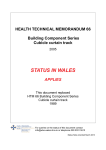

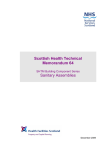
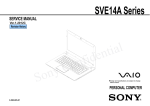
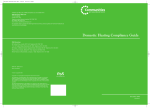
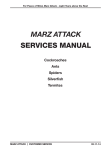
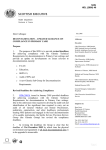
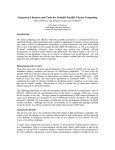
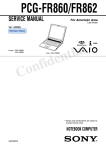
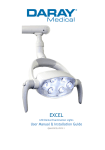

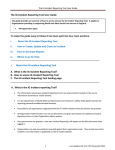
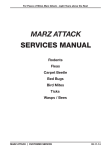

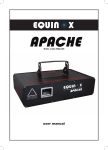
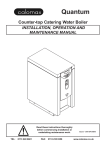
![General design guidance [PDF 950KB]](http://vs1.manualzilla.com/store/data/005804077_1-5fec14441b6361d04901f77e13b8a9c0-150x150.png)
